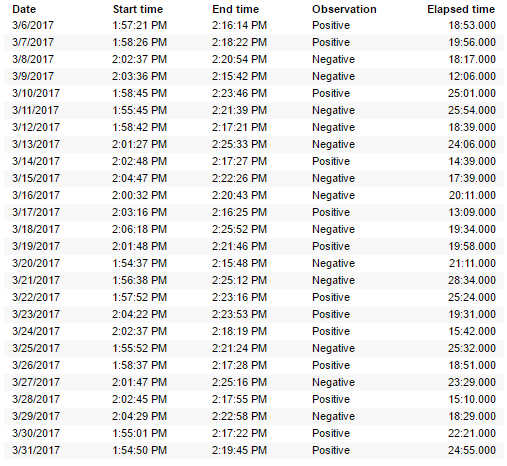TERR_TimeSpan
In the Spotfire
Custom Expressions dialog box, you can select
the pre-defined expression
TERR_TimeSpan
from the
Function list. This expression function
invokes the TERR engine to return a vector or a single column data frame of the
data type
difftime
, which is converted to a Spotfire
column of the corresponding Spotfire data type
TimeSpan.
| Argument | Argument description |
|---|---|
| A TERR script. | The TERR script contains the following.
|
| Spotfire column names. | Passed as additional arguments, these are
the data column names that
input1 to
inputN represent. All
columns must be the same length.
|
| Returned by TERR | Converted in Spotfire |
|---|---|
A vector or a single column data
frame of data type
difftime.
|
A column with the same number of rows as the input, and of the data type TimeSpan. |
TERR_TimeSpan example
In this example, in
Spotfire,
take thirty observations with a start time and an end time. You can find the
sample data set in
Observation
data set for Spotfire examples.
Tip: You can
copy (CTRL+C) the contents of the sample data table and paste it (CTRL+V) into
the Spotfire user interface.
Calculate the observation time for each entry.
TERR_TimeSpan("output <- difftime(input1, input2)",[End time],[Start time])In the example, we named the resulting column Elapsed time and added the column to a table visualization. The resulting table in Spotfire shows the following.

Important: Spotfire
autocorrects the function case or name to that of built-in Spotfire function
names. (For example, TERR contains the function
max, and Spotfire contains the function
Max. ) You must overwrite this autocorrection
manually to ensure that you use the TERR function case and name in your
expression function.
See Embedding the Contents of a Script in an Expression Function for a detailed procedure for creating an expression function.
Parent topic: Built-In TERR Expression Functions in Spotfire